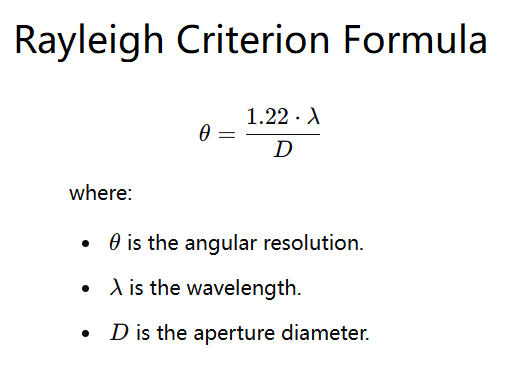 Home
Home
 Back
Back

The Rayleigh criterion is a fundamental concept in optics that defines the minimum angular separation required to resolve two point sources as distinct.
The Rayleigh criterion formula is given by:
where:
The Rayleigh criterion is based on the idea that two point sources are considered resolved if the first minimum of the diffraction pattern of one source lies at the maximum of the diffraction pattern of the other source. This criterion sets a limit on the resolving power of an optical instrument.
By using the Rayleigh criterion, one can calculate the smallest separation between two objects that can be resolved by a given optical system. This is important in various applications such as astronomy, microscopy, and imaging systems.